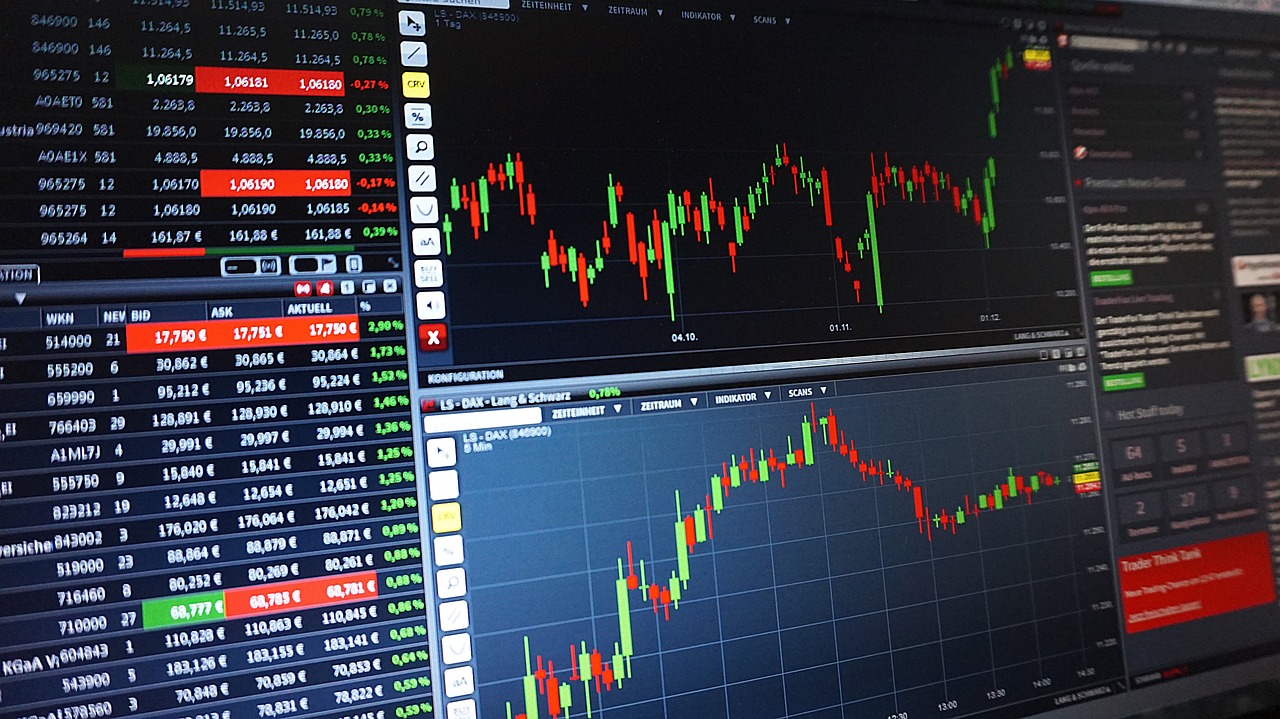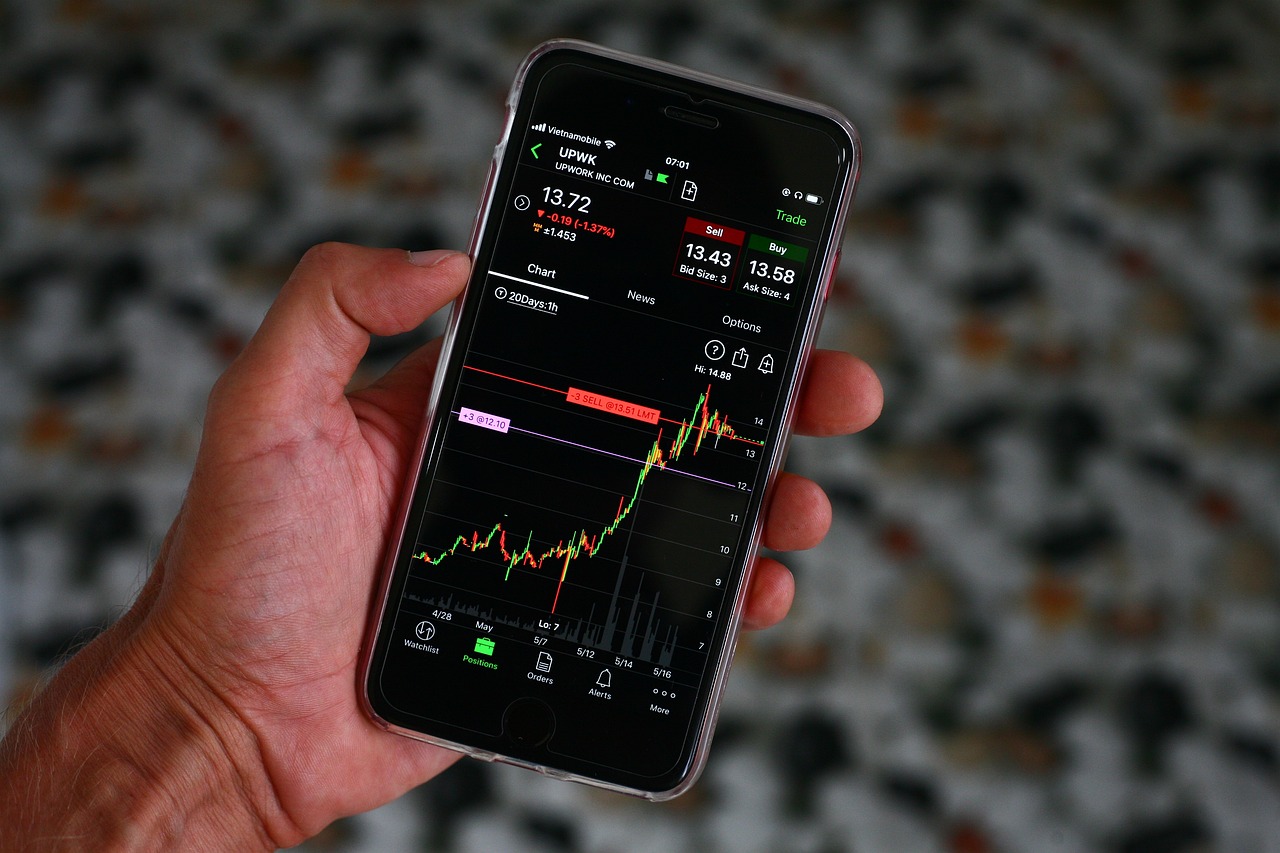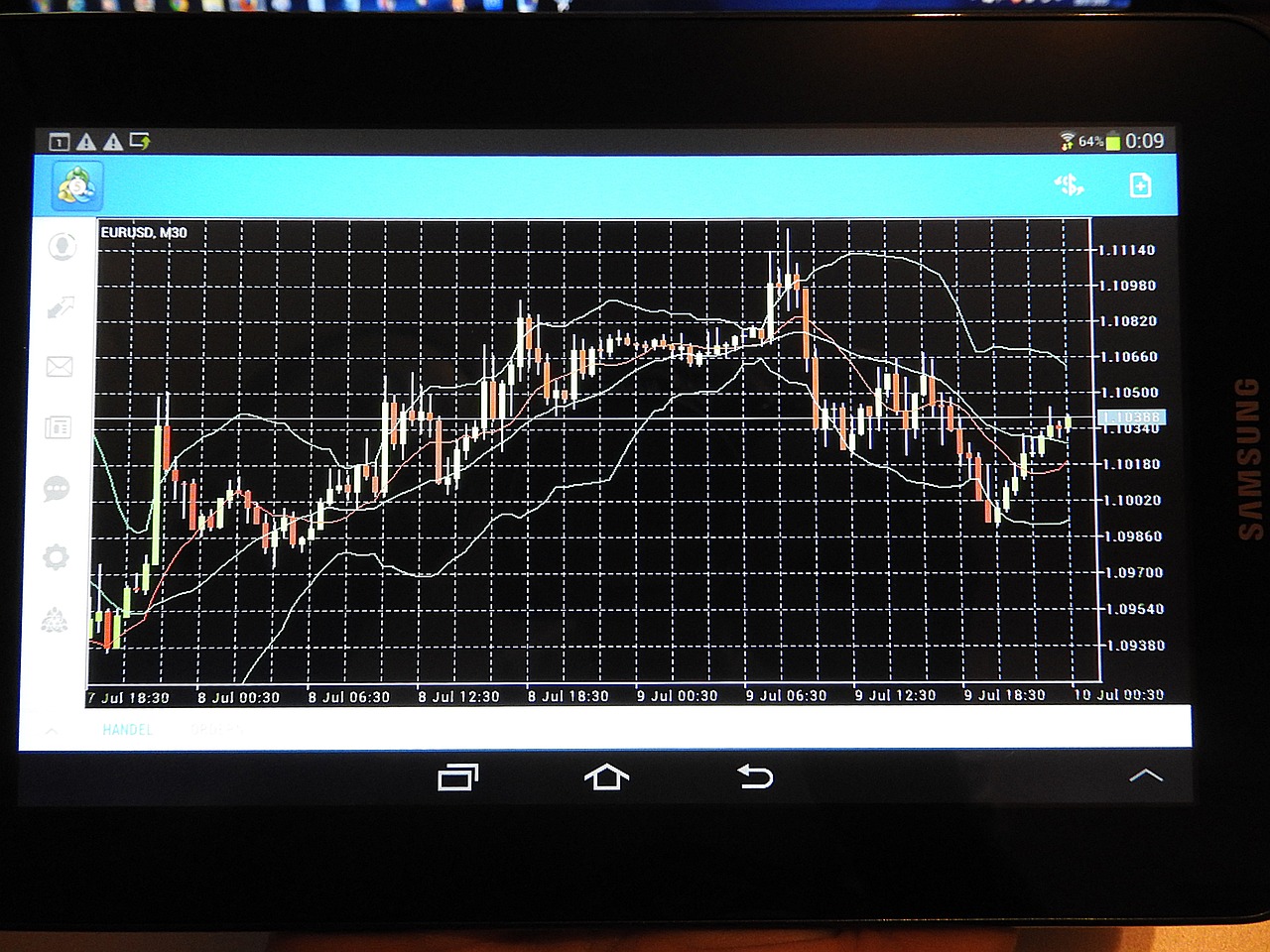How to Develop a Scalping Strategy for Crypto
In the rapidly evolving world of cryptocurrency trading, scalping has emerged as a dynamic strategy that allows traders to capitalize on fleeting price movements. Scalping is not just about making quick trades; it’s a meticulous dance of timing, analysis, and intuition. If you’re looking to dive into the thrilling waters of crypto scalping, you’ll need a solid strategy that combines technical know-how with a keen understanding of market dynamics. This article will guide you through the essential components of creating a successful scalping strategy, including techniques, tools, and tips for maximizing profits while effectively managing risks.
At its core, scalping involves executing a high volume of trades to profit from small price changes. Imagine a fisherman casting his net repeatedly in a pond, hoping to catch small fish rather than one big catch. This is the essence of scalping—making numerous small gains that accumulate over time. The primary objective is to enter and exit trades quickly, often within minutes, and to take advantage of minor fluctuations in price. Scalping is particularly popular among crypto traders due to the high volatility and liquidity present in the market, which can lead to numerous trading opportunities throughout the day.
Not all cryptocurrencies are created equal when it comes to scalping. Selecting the right assets is crucial for maximizing your potential profits. You should consider several factors, including liquidity, volatility, and market trends. A cryptocurrency with high liquidity ensures that you can enter and exit trades without significant price slippage, while volatility can create the price movements needed for profitable trades. Additionally, keeping an eye on market trends can help you identify which cryptocurrencies are currently in play, allowing you to position yourself effectively.
Liquidity is the lifeblood of scalping. It refers to how easily you can buy or sell an asset without causing a noticeable change in its price. In the world of crypto, liquidity can vary significantly between different coins and exchanges. High liquidity means that there are plenty of buyers and sellers, which is ideal for scalping. To identify suitable cryptocurrencies, you can analyze their trading volumes and the number of active traders. A good rule of thumb is to focus on coins that have a daily trading volume of at least $1 million. This ensures that you can execute your trades swiftly and efficiently.
Understanding market depth is essential for gauging liquidity. Market depth refers to the market's ability to sustain relatively large market orders without impacting the price of the cryptocurrency significantly. By analyzing the order book, you can see the number of buy and sell orders at various price levels. This information can help you gauge whether a cryptocurrency is suitable for scalping. A deep market with numerous orders at different price levels indicates strong liquidity, making it a prime candidate for your scalping strategy.
Volatility is a double-edged sword in the scalping world. On one hand, it presents opportunities for quick profits; on the other, it can lead to significant losses if not managed properly. To assess volatility in crypto markets, traders often look at historical price movements and use indicators such as the Average True Range (ATR) to measure how much a cryptocurrency typically fluctuates in a given time frame. Understanding these factors can help you determine when to enter and exit trades, allowing you to take advantage of price swings while minimizing risks.
Utilizing technical analysis tools is essential for successful scalping. Traders often rely on various indicators and chart patterns to make quick decisions. Some popular tools include:
- Moving Averages: These help smooth out price data to identify trends.
- Relative Strength Index (RSI): This momentum oscillator measures the speed and change of price movements.
- MACD (Moving Average Convergence Divergence): This tool helps identify potential buy and sell signals.
By combining these tools with your market understanding, you can make informed trading decisions that align with your scalping strategy.
Effective risk management is vital in scalping to protect your capital. Without proper risk management, even the best strategies can lead to significant losses. Key strategies include setting stop-loss orders and determining appropriate position sizes. These techniques help ensure that you can withstand the inevitable fluctuations in the market while protecting your investments.
Stop-loss orders are essential for limiting losses during unfavorable trades. By setting a stop-loss order, you can automatically sell your cryptocurrency when it reaches a certain price, preventing further losses. The key is to set appropriate stop-loss levels based on market conditions and your personal risk tolerance. A common strategy is to set the stop-loss at a percentage below the entry price, allowing for some market noise while protecting against significant downturns.
Determining the right position size is critical in scalping. Position sizing refers to how much capital you allocate to a particular trade. A good rule of thumb is to risk only a small percentage of your total trading capital on each trade—typically between 1% to 2%. This approach helps ensure that a string of losses won’t wipe out your account. You can calculate position sizes based on your stop-loss levels and your overall risk management plan, ensuring that you stay within your risk tolerance.
Q: What is the best time frame for scalping in crypto?
A: Most scalpers prefer to trade on shorter time frames, such as 1-minute or 5-minute charts, to capture quick price movements.
Q: Can I scalp with a small amount of capital?
A: Yes, you can scalp with a small amount of capital, but be mindful of trading fees and ensure you have a solid strategy in place to maximize your returns.
Q: Is scalping suitable for beginners?
A: While scalping can be profitable, it requires a good understanding of market dynamics and technical analysis. Beginners should practice with a demo account before trading with real money.

Understanding Scalping in Crypto
Scalping in the world of cryptocurrency trading is akin to a high-speed chase—it's all about making quick moves to seize small price changes before they vanish. Imagine a sprinter at the starting line, waiting for the gun to go off; that's how scalpers operate, ready to pounce on fleeting opportunities. The primary objective of scalping is to generate profits from minor fluctuations in price, often executing dozens or even hundreds of trades in a single day. This fast-paced strategy is particularly popular among traders who thrive on adrenaline and quick decision-making.
One of the key attractions of scalping is its potential for rapid returns. Unlike traditional trading strategies that may require holding assets for days or weeks, scalping allows traders to capitalize on price movements in mere minutes or seconds. However, this approach is not without its challenges. Scalpers must be equipped with a robust set of tools and a deep understanding of market dynamics to navigate the volatile waters of cryptocurrency. The thrill of the chase comes with its own set of risks, making it essential for traders to have a sound strategy in place.
Moreover, scalping isn't just about speed; it also demands a keen eye for detail. Traders need to analyze price charts, monitor market trends, and stay updated with news that could impact the cryptocurrency landscape. The ability to interpret data quickly can make the difference between a profitable trade and a costly mistake. Therefore, successful scalpers often rely on a combination of technical analysis, market sentiment, and advanced trading tools to inform their decisions.
In summary, scalping in crypto is a dynamic and exciting trading strategy that requires a unique skill set. It's not for the faint of heart, but for those who can handle the pressure, it offers the potential for significant rewards. As we delve deeper into this article, we will explore the various components that contribute to a successful scalping strategy, including how to choose the right cryptocurrencies, the importance of liquidity, and the tools that can enhance your trading experience.

Choosing the Right Cryptocurrency
When it comes to scalping in the world of cryptocurrency, one of the most critical decisions you'll make is selecting the right digital assets to trade. Choosing the right cryptocurrencies can significantly influence your profitability and overall success in this fast-paced trading environment. But how do you determine which coins are suitable for your scalping strategy? Let’s break it down.
The first factor to consider is liquidity. Liquidity refers to how easily an asset can be bought or sold without causing a significant impact on its price. In the realm of crypto, high liquidity is essential for scalping because it allows traders to enter and exit positions swiftly. Imagine trying to sell a rare collectible; if there are few buyers, you might have to lower your price. Similarly, in crypto trading, low liquidity can lead to slippage, which can eat into your profits. Therefore, always look for cryptocurrencies that have substantial trading volumes.
Next up is volatility. While it can be a double-edged sword, volatility is what makes scalping possible. It presents opportunities for quick gains but also comes with risks. You want to choose cryptocurrencies that exhibit a healthy level of price fluctuations. Think of volatility as the waves in the ocean; they can be thrilling to ride but also dangerous if you’re not prepared. To assess volatility, you can look at historical price movements and use tools like the Average True Range (ATR) indicator to gauge how much a cryptocurrency typically moves within a given timeframe.
Another aspect to consider is market trends. Understanding the broader market sentiment can help you make informed decisions. If the overall market is bullish, it might be wise to focus on cryptocurrencies that are gaining momentum. Conversely, in a bearish market, you might want to look for coins that are more resilient or even consider shorting them. Keeping an eye on news events, regulatory changes, and technological advancements can provide insights into market trends. You can also follow social media and crypto news platforms to stay updated.
To sum it up, when choosing the right cryptocurrency for scalping, keep these factors in mind:
- Liquidity: Look for coins with high trading volumes.
- Volatility: Choose assets that have significant price movements.
- Market Trends: Stay aware of the overall market sentiment and news.
By carefully evaluating these elements, you can better position yourself for success in the unpredictable world of crypto scalping. Remember, the right choice can mean the difference between a profitable trade and a loss, so take your time and do your homework!

Liquidity Considerations
When diving into the world of crypto scalping, one of the most critical factors to consider is liquidity. But what exactly does liquidity mean in this context? Simply put, liquidity refers to how easily an asset can be bought or sold in the market without causing a significant impact on its price. In the fast-paced environment of cryptocurrency trading, where prices can fluctuate wildly within seconds, having a solid grasp of liquidity is essential for any scalper looking to make quick profits.
Imagine you're at a bustling market where vendors are selling fruits. If there are plenty of apples available and many buyers, you can easily buy or sell apples without affecting their price much. However, if there are only a few apples and many buyers, the price might skyrocket due to high demand. The same principle applies to cryptocurrencies. High liquidity means you can enter and exit positions swiftly without worrying about slippage—where the price you execute differs from the expected price due to market movement.
To gauge the liquidity of a cryptocurrency, consider the following factors:
- Trading Volume: Look for cryptocurrencies that have a high trading volume. This indicates that many traders are actively buying and selling, which is a good sign of liquidity.
- Order Book Depth: A deep order book with numerous buy and sell orders at various price levels can indicate strong liquidity.
- Market Capitalization: Generally, larger market cap cryptocurrencies tend to have better liquidity than smaller, lesser-known coins.
You can assess liquidity by examining various metrics on trading platforms. For instance, many exchanges provide real-time data on trading volume and order book depth. A quick glance at these statistics can help you determine whether a particular cryptocurrency is suitable for scalping. If you notice that a coin has low trading volume or a shallow order book, it might be wise to steer clear; such conditions can lead to increased slippage and potential losses.
Moreover, it's essential to understand that liquidity can vary significantly between different times of the day. For example, trading during peak hours when many traders are active can enhance your chances of executing trades at your desired prices. Conversely, trading during off-peak hours might expose you to lower liquidity, making it harder to enter or exit positions without incurring losses.
In conclusion, liquidity is a cornerstone of successful crypto scalping. By focusing on cryptocurrencies with high liquidity, you can make quicker trades, reduce slippage, and ultimately improve your chances of maximizing profits. Always remember to analyze the liquidity of your chosen assets before diving into a trade; it could be the difference between a profitable day and a frustrating loss.
Q: Why is liquidity important in scalping?
A: Liquidity is crucial in scalping because it allows traders to enter and exit positions quickly without causing significant price changes, which is essential for making profits on small price movements.
Q: How can I determine if a cryptocurrency is liquid?
A: You can assess liquidity by looking at trading volume, order book depth, and market capitalization. High trading volume and a deep order book generally indicate good liquidity.
Q: Does liquidity change throughout the day?
A: Yes, liquidity can vary throughout the day. Trading during peak hours typically offers better liquidity compared to off-peak times when fewer traders are active.

Market Depth Analysis
When it comes to scalping in the cryptocurrency world, understanding market depth is like having a secret weapon in your trading arsenal. Market depth refers to the market's ability to sustain relatively large orders without impacting the price of the asset significantly. It's essentially a visual representation of supply and demand at various price levels, and it can provide invaluable insights for traders looking to make quick gains. By analyzing the order books, you can identify where the majority of buy and sell orders are concentrated, which can help you make more informed decisions.
Imagine you’re at a bustling market, and you want to buy apples. If there are only a few stalls selling apples, and they’re all crowded, you might have to pay a higher price. Conversely, if there are many stalls with plenty of apples, you can choose where to buy based on the price. The same principle applies in crypto trading. A deeper market with a higher number of buy and sell orders means you can enter and exit trades more smoothly without causing a spike in price.
To effectively analyze market depth, you should focus on the following key elements:
- Order Book: This is a real-time list of buy and sell orders for a specific cryptocurrency. By examining the order book, you can gauge the buying and selling pressure at various price levels.
- Bid-Ask Spread: The difference between the highest price a buyer is willing to pay (the bid) and the lowest price a seller will accept (the ask). A smaller spread often indicates a more liquid market, which is ideal for scalping.
- Support and Resistance Levels: These are price levels where buying or selling pressure tends to increase. Identifying these levels can help you anticipate potential price movements.
To illustrate how market depth analysis works, consider the following example:
| Price Level | Buy Orders | Sell Orders |
|---|---|---|
| $40,000 | 5 BTC | 2 BTC |
| $39,500 | 10 BTC | 4 BTC |
| $39,000 | 15 BTC | 3 BTC |
In this table, you can see various price levels with corresponding buy and sell orders. If you notice that there are significantly more buy orders at $39,000 compared to sell orders, it may indicate a strong support level, which could be a good entry point for a scalping trade. Conversely, if the sell orders are high at a certain price, it could signal resistance, suggesting that the price might struggle to rise above that level.
Ultimately, mastering market depth analysis can elevate your scalping strategy to new heights. It allows you to anticipate price movements and make quick decisions, which is crucial in the fast-paced world of cryptocurrency trading. So, the next time you’re preparing to make a trade, take a moment to dive into the depths of the market. You might just uncover opportunities that others overlook!
1. What is market depth in cryptocurrency trading?
Market depth refers to the amount of buy and sell orders at various price levels for a specific cryptocurrency, which helps traders understand liquidity and potential price movements.
2. Why is market depth important for scalping?
Market depth is crucial for scalping because it helps traders gauge the liquidity of an asset, allowing them to enter and exit trades quickly without significantly affecting the price.
3. How can I analyze market depth?
You can analyze market depth by examining the order book, looking at the bid-ask spread, and identifying support and resistance levels based on the concentration of buy and sell orders.
4. What should I look for in the order book?
Look for large concentrations of buy and sell orders at specific price levels, as well as the bid-ask spread, to determine potential entry and exit points for scalping.

Volatility Factors
When it comes to scalping in the cryptocurrency market, volatility is both your best friend and worst enemy. Imagine riding a roller coaster—there are thrilling highs and terrifying drops. In the world of crypto trading, these fluctuations can create opportunities for profit, but they can also lead to significant losses if not managed properly. So, how do you navigate this wild ride? Understanding the factors that contribute to volatility is crucial for any scalper looking to make quick trades and capitalize on price movements.
One of the primary contributors to volatility is market sentiment. News, social media trends, and influential figures can sway the market dramatically. For instance, when a prominent figure tweets about a cryptocurrency, the price can skyrocket or plummet within minutes. This reaction is often fueled by the emotional responses of traders, creating an environment ripe for scalping. Therefore, staying updated with the latest news and market trends is essential. You might want to set up alerts for major announcements or follow trusted sources to keep your finger on the pulse of the market.
Another factor to consider is liquidity. A highly liquid market tends to have less volatility because large buy or sell orders can be executed without causing significant price changes. Conversely, in less liquid markets, even small trades can lead to dramatic price swings. This is why selecting cryptocurrencies with high liquidity is vital for a successful scalping strategy. To gauge liquidity, you can analyze trading volumes and order book depth. A quick look at a cryptocurrency’s trading volume over the past 24 hours can provide valuable insights into its liquidity levels.
Additionally, market structure plays a key role in volatility. Understanding whether the market is in a bullish or bearish trend can help you anticipate potential price movements. For example, during a strong bullish trend, prices may rise rapidly, creating multiple opportunities for scalping. However, in a bearish market, prices may drop just as quickly, which could lead to increased risk. Thus, it’s essential to analyze the overall market structure before making any trades.
Lastly, external factors such as regulatory news and macroeconomic events can also impact cryptocurrency volatility. For instance, announcements regarding regulations can cause sudden price shifts across the market. Keeping an eye on these external factors can give you an edge in predicting potential volatility spikes. In essence, successful scalping requires a keen awareness of both internal market dynamics and external influences.
In conclusion, while volatility can be daunting, it also presents numerous opportunities for savvy traders. By understanding the factors that contribute to volatility—market sentiment, liquidity, market structure, and external influences—you can better position yourself to take advantage of price movements. Just remember, with great opportunity comes great responsibility; always manage your risks effectively to ensure a sustainable trading journey.
- What is scalping in cryptocurrency trading? Scalping is a trading strategy that involves making numerous trades within a short period to profit from small price changes.
- How do I choose the right cryptocurrency for scalping? Look for cryptocurrencies with high liquidity, volatility, and positive market trends.
- What tools are essential for scalping? Technical analysis tools, real-time charts, and market news feeds are crucial for making quick trading decisions.
- How can I manage risks while scalping? Utilize stop-loss orders, determine appropriate position sizes, and stay informed about market conditions.

Technical Analysis Tools
When it comes to scalping in the crypto market, having the right at your disposal can make all the difference. These tools help traders make informed decisions quickly, allowing them to capitalize on those fleeting price movements that scalping relies on. Think of technical analysis as your personal crystal ball—helping you predict market movements based on historical data and patterns.
One of the most popular tools among scalpers is the moving average. This indicator smooths out price data to identify trends over a specific period. For scalpers, short-term moving averages like the 5-minute or 15-minute can be particularly useful. They help in spotting entry and exit points quickly. When the price crosses above a moving average, it can signal a buying opportunity, while a drop below may indicate it's time to sell.
Another essential tool is the Relative Strength Index (RSI). This momentum oscillator measures the speed and change of price movements, helping traders determine whether a cryptocurrency is overbought or oversold. An RSI above 70 typically suggests that an asset is overbought, while an RSI below 30 indicates it may be oversold. For scalpers, these signals can provide quick insights into potential reversal points, allowing for rapid trading decisions.
Additionally, candlestick patterns play a significant role in technical analysis for scalping. By analyzing the shapes and formations of candlesticks, traders can gain insights into market sentiment. For instance, a hammer candlestick pattern may signal a potential reversal after a downtrend, while a doji can indicate indecision in the market. Recognizing these patterns can help scalpers make timely trades that align with market movements.
To further enhance your technical analysis, consider using charting software that integrates multiple indicators and allows for real-time analysis. Many platforms offer customizable dashboards where you can track various cryptocurrencies simultaneously, making it easier to spot opportunities as they arise. Here’s a quick comparison of some popular charting tools:
| Charting Tool | Key Features | Best For |
|---|---|---|
| TradingView | Customizable indicators, social trading features, extensive charting options | All levels of traders |
| MetaTrader 4/5 | Automated trading, expert advisors, extensive technical indicators | Advanced traders |
| Coinigy | Multi-exchange trading, real-time data, portfolio management | Active traders |
In conclusion, mastering the use of technical analysis tools is not just beneficial but essential for anyone looking to develop a successful scalping strategy in the crypto market. By effectively utilizing indicators like moving averages, RSI, and candlestick patterns, along with reliable charting software, you can significantly enhance your trading performance. Remember, the key to successful scalping lies in making quick, informed decisions—so equip yourself with the best tools available!
- What is the best time frame for scalping in crypto? Most scalpers prefer short time frames, typically ranging from 1 to 15 minutes, to take advantage of small price movements.
- Do I need advanced technical skills to scalp? While having a solid understanding of technical analysis is beneficial, many platforms offer user-friendly interfaces that can help beginners get started.
- How much capital do I need to start scalping? The capital required can vary, but starting with a few hundred dollars is common. Just ensure you have a solid risk management strategy in place.

Risk Management Techniques
When it comes to scalping in the world of cryptocurrency, effective risk management is not just a luxury; it's a necessity. Imagine you're a tightrope walker, balancing on a thin line high above the ground. One wrong move, and it could all come crashing down. In the same way, failing to manage risks could lead to significant losses in your trading account. To navigate this high-stakes environment, traders must adopt strategies that protect their capital while allowing for the potential of profit. Here are some key techniques that can serve as your safety net in the unpredictable crypto landscape.
One of the most crucial tools in your risk management arsenal is the stop-loss order. This is like having a parachute ready for when things go wrong. By setting a stop-loss order, you instruct your trading platform to automatically sell your asset when it reaches a certain price point, thus limiting your losses. The challenge lies in determining the right level for your stop-loss. It should be based on market conditions and your personal risk tolerance. For instance, if you're scalping a highly volatile cryptocurrency, you might want to set a wider stop-loss to avoid being stopped out by normal market fluctuations. Conversely, for more stable assets, a tighter stop-loss may be appropriate.
Another essential element of risk management is position sizing. This refers to how much of your capital you allocate to each trade. Think of it as the portion of a pizza you decide to take; if you take too big of a slice, you risk leaving yourself with nothing if the trade goes south. To calculate your position size effectively, consider the following factors:
- Your total trading capital
- Your risk tolerance per trade (often expressed as a percentage of your capital)
- The distance between your entry point and your stop-loss level
By using these factors, you can determine a position size that aligns with your overall risk management plan. For example, if you have a trading capital of $10,000 and are willing to risk 1% per trade, your maximum loss would be $100. If your stop-loss is set $10 away from your entry point, you would then trade a position size of 10 units. This systematic approach ensures that no single trade can significantly impact your overall portfolio.
Moreover, it’s important to stay informed about market trends and news that could affect your trades. For instance, sudden regulatory announcements or major technological updates can create significant price swings. By keeping your ear to the ground, you can adjust your stop-loss orders and position sizes accordingly, ensuring that your risk management strategies remain effective in a changing environment.
Lastly, emotional discipline plays a critical role in risk management. It’s easy to get caught up in the thrill of trading, especially when you see quick profits or losses. However, sticking to your plan and not letting emotions dictate your trades is essential. Consider using trading journals to track your trades and reflect on your decision-making process. This practice can help you identify patterns in your trading behavior and improve your risk management techniques over time.
In conclusion, mastering risk management techniques is akin to developing a strong foundation for a house. Without it, everything else can come crashing down. By employing stop-loss orders, calculating appropriate position sizes, staying informed about market conditions, and maintaining emotional discipline, you can create a robust framework that not only protects your capital but also enhances your overall trading performance.
Q: What is the best way to set a stop-loss order?
A: The best way to set a stop-loss order is to analyze market conditions and determine a price level that reflects your risk tolerance. It's essential to avoid setting it too close to your entry point to prevent being stopped out by normal market fluctuations.
Q: How much of my capital should I risk on a single trade?
A: A common guideline is to risk no more than 1-2% of your total trading capital on a single trade. This helps to protect your account from significant losses while still allowing for potential profits.
Q: How can I improve my emotional discipline while trading?
A: Keeping a trading journal can help you reflect on your trades and decision-making processes. Additionally, setting clear trading rules and sticking to them can help you manage emotions during trading sessions.

Setting Stop-Loss Orders
When it comes to scalping in the volatile world of cryptocurrency, one of the most effective tools at your disposal is the stop-loss order. Think of it as your safety net, designed to catch you before you fall too deep into the red. The essence of a stop-loss order is simple: it automatically sells your asset when it reaches a predetermined price point, thereby limiting your losses. But how do you determine that magic number? That’s where things can get a bit tricky.
First, consider the market conditions. If you're trading in a highly volatile market, you might want to set your stop-loss a bit further away from the current price to avoid being stopped out due to normal price fluctuations. Conversely, in a more stable market, you can set your stop-loss closer to your entry point. This balance is crucial, as setting it too tight might result in premature exits, while setting it too loose could lead to larger losses than you intended.
Another factor to consider is your risk tolerance. Everyone has a different comfort level when it comes to losing money. Ask yourself: how much are you willing to lose on a single trade? A good rule of thumb is to risk no more than 1-2% of your total trading capital on any one trade. For example, if your trading capital is $10,000, you should set your stop-loss so that your potential loss does not exceed $100 to $200. This way, you can weather the storms of the crypto market without losing your entire portfolio.
To set effective stop-loss orders, you can use various methods, including:
- Percentage-Based Stop-Loss: This method involves setting your stop-loss at a specific percentage below your entry price. For instance, if you buy Bitcoin at $50,000 and set a stop-loss at 5%, it will trigger a sale if the price drops to $47,500.
- Support Level Stop-Loss: This strategy involves placing your stop-loss just below a significant support level. If the price breaks through that level, it could signal a larger downward trend.
- Volatility-Based Stop-Loss: Using indicators like the Average True Range (ATR), you can gauge how much the price typically fluctuates and set your stop-loss accordingly.
Once you’ve determined your stop-loss level, it’s important to stick to it. Emotions can run high in trading, and it’s easy to second-guess your decisions when the market moves against you. But remember, the goal of a stop-loss is to protect your capital and maintain discipline in your trading strategy. If you find yourself frequently adjusting your stop-loss levels out of fear or greed, it might be time to reassess your overall strategy.
In summary, setting stop-loss orders is a critical part of a successful scalping strategy. By carefully considering market conditions, your risk tolerance, and employing effective methods for determining stop-loss levels, you can safeguard your investments and enhance your trading performance. Remember, in the fast-paced world of crypto, it’s better to be safe than sorry!
- What is a stop-loss order?
A stop-loss order is an instruction to sell a cryptocurrency when it reaches a certain price, limiting potential losses. - How do I determine where to set my stop-loss?
Consider market conditions, your risk tolerance, and use methods like percentage-based, support level, or volatility-based stop-losses. - Can I change my stop-loss order after placing it?
Yes, you can adjust your stop-loss order at any time, but try to avoid doing so based on emotions.

Position Sizing Strategies
When it comes to scalping in the volatile world of cryptocurrency, position sizing is one of the most critical aspects that can make or break your trading success. Think of it as the foundation of your trading strategy; without a solid base, everything can come crashing down. The essence of position sizing lies in determining how much of your capital to allocate to each trade, ensuring that you don’t overexpose yourself to risk while still capitalizing on potential gains.
To start, it’s essential to understand your overall trading capital and the level of risk you are willing to take on each trade. A common rule of thumb is to risk no more than 1% to 2% of your trading capital on a single trade. This means if you have a trading account of $10,000, you should limit your risk to $100 or $200 per trade. This simple yet powerful strategy can help you survive the inevitable losing streaks that every trader faces, allowing you to stay in the game longer.
Now, how do you calculate your position size? Here’s a straightforward formula to follow:
| Formula | Description |
|---|---|
| Position Size (Account Risk / Trade Risk) x Number of Coins | This formula helps you determine how many coins to buy based on your risk tolerance. |
Let’s break this down further. Account Risk is the amount you are willing to lose on the trade, while Trade Risk is the difference between your entry price and your stop-loss price. For example, if you enter a trade at $50 and set your stop-loss at $48, your trade risk is $2. If you are willing to risk $100 on this trade, your position size would be:
Position Size (100 / 2) 50 coins
This means you would buy 50 coins of that cryptocurrency. By adhering to this strategy, you can effectively manage your risk and ensure that no single trade can significantly impact your overall portfolio.
In addition to the basic formula, it’s also essential to consider market conditions and your personal trading style. For instance, if you’re trading in a highly volatile market, you might want to reduce your position size to account for larger price swings. Conversely, in a more stable market, you could afford to increase your position size slightly to capture more gains.
Another important aspect of position sizing is to continuously evaluate your performance. Keep a trading journal where you document each trade, including the position size, entry and exit points, and the outcome. This practice not only helps you refine your strategy but also instills discipline in your trading approach. Over time, you'll develop a better sense of what position sizes work best for you under different market conditions.
In summary, mastering position sizing is akin to being a skilled captain navigating stormy seas. It requires careful planning, risk assessment, and adaptability to changing conditions. By implementing a structured approach to position sizing, you can enhance your scalping strategy, improve your trading performance, and ultimately achieve your financial goals.
- What is the best position size for scalping? The best position size depends on your trading capital and risk tolerance, but generally, risking 1% to 2% of your total capital per trade is advisable.
- How do I determine my risk tolerance? Your risk tolerance is personal and can be assessed based on your financial situation, trading experience, and emotional comfort with losing money.
- Can I adjust my position size based on market conditions? Yes! It’s wise to adjust your position size according to market volatility and your trading strategy.
Frequently Asked Questions
- What is scalping in cryptocurrency trading?
Scalping in cryptocurrency trading refers to a strategy where traders make numerous quick trades to profit from small price movements. The goal is to capitalize on minor fluctuations in the market, often executing trades within seconds or minutes.
- Why is liquidity important for scalping?
Liquidity is crucial for scalping because it allows traders to enter and exit positions without causing significant price changes. A liquid market ensures that there are enough buyers and sellers, making it easier to execute trades quickly and at desired prices.
- How can I assess the volatility of a cryptocurrency?
To assess the volatility of a cryptocurrency, traders can analyze historical price movements, look at the average true range (ATR), or monitor news and events that could impact the market. High volatility can present both opportunities and risks for scalpers.
- What technical analysis tools should I use for scalping?
Some essential technical analysis tools for scalping include moving averages, Bollinger Bands, and the Relative Strength Index (RSI). These indicators can help traders identify trends, potential reversals, and entry and exit points.
- How do I set an effective stop-loss order?
To set an effective stop-loss order, consider the current market conditions and your risk tolerance. A common approach is to place the stop-loss just below a recent support level or a certain percentage away from the entry price to limit potential losses.
- What is position sizing and why is it important?
Position sizing refers to determining the amount of capital to allocate to a specific trade. It is important because it helps manage risk and ensures that no single trade can significantly impact your overall trading capital.
- Can I scalp any cryptocurrency?
While you can technically scalp any cryptocurrency, it's best to focus on those with high liquidity and volatility. Popular cryptocurrencies like Bitcoin and Ethereum often provide better opportunities for scalping due to their trading volumes and price movements.
- What are the risks associated with scalping?
The main risks of scalping include market volatility, slippage, and the potential for emotional decision-making due to the fast-paced nature of trading. Effective risk management strategies are essential to mitigate these risks and protect your capital.



















